Are you wondering if you need to put polyurethane on wood that was stained? The answer is yes, you should use a protective finish, such as polyurethane, to safeguard the wood’s beauty and integrity. Applying polyurethane over stain is essential to achieve a smooth, even finish, but it is important to ensure that the stain is completely dry before applying the polyurethane.
Polyurethane is a clear, durable finish that protects wood from scratches, stains, and water damage. It also enhances the natural beauty of the wood and adds a glossy or matte finish, depending on your preference. While you do not have to put polyurethane over the wood stain, it is highly recommended, especially if the wood will be exposed to wear and tear or moisture.
Choosing the right type of polyurethane based on the type of wood and the intended use of the project is important. There are two basic types of polyurethane: oil-based and water-based. Both have different pros and cons, such as drying time, odor, and exposure to heat or the elements. By understanding the benefits and drawbacks of each type, you can make an informed decision on which type of polyurethane to use on your stained wood project.
Understanding Polyurethane
Polyurethane is a popular finish used on wood surfaces to protect them from scratches, water damage, and other types of wear and tear. It is a synthetic polymer that is available in both oil-based and water-based forms.
Here are a few things you should know about polyurethane:
- Oil-based vs. Water-based: Oil-based polyurethane is more durable and provides a richer finish, but it takes longer to dry and has a strong odor. Water-based polyurethane, on the other hand, dries faster, has a clear finish, and is low-odor. It is recommended for surfaces that see little exposure to heat or the elements.
- Gloss vs. Satin vs. Matte: Polyurethane comes in a variety of sheens, including gloss, satin, and matte. Gloss provides a shiny finish, while satin and matte provide a more subdued finish. The sheen you choose depends on your personal preference and the look you are trying to achieve.
- Application: Proper application of polyurethane is essential to achieving a smooth, even finish. It is best to apply polyurethane in thin coats using a high-quality brush or roller. Sanding between coats is also recommended to ensure a smooth finish.
- Curing Time: Polyurethane takes time to cure, and it is important to avoid using the surface until it is fully cured. Oil-based polyurethane can take up to 24 hours to dry, while water-based polyurethane dries in as little as 2 hours. However, both types of polyurethane take several days to fully cure.
Overall, polyurethane is an excellent choice for protecting and enhancing the beauty of wood surfaces. Understanding the different types of polyurethane and how to properly apply them can help you achieve a beautiful, long-lasting finish on your wood projects.
The Purpose of Staining Wood
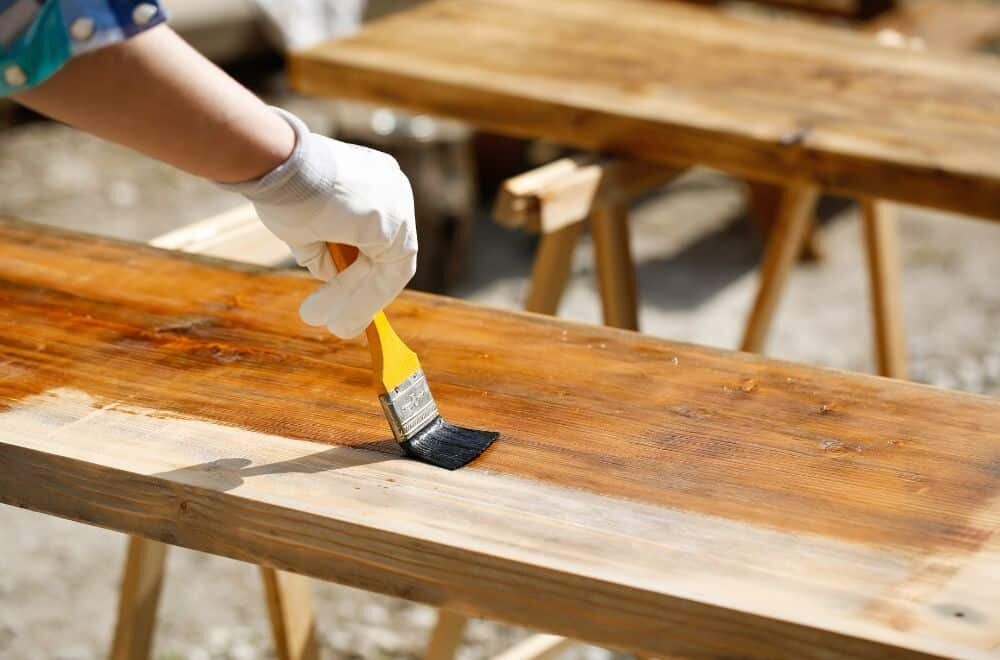
Staining wood is a popular way to enhance its natural beauty and add color to it. It is a process of applying a pigmented liquid to the surface of the wood to change its color. The purpose of staining wood is to:
- Enhance the natural beauty of the wood: Staining wood can bring out the natural grain patterns and textures of the wood, making it more visually appealing.
- Add color to the wood: Staining wood can add color to the wood, which can help it blend in with other interior design elements.
- Protect the wood: Staining wood can help protect it from damage caused by moisture, sunlight, and other environmental factors.
- Create a uniform appearance: Staining wood can help create a uniform appearance by covering up any imperfections or blemishes in the wood.
It’s important to note that staining wood alone does not provide protection against moisture, heat, or checking. For this reason, it’s essential to use a protective finish, such as polyurethane, after staining to safeguard the wood’s beauty and integrity.
Applying Polyurethane on Stained Wood
If you have stained your wood, it is recommended to apply polyurethane to protect the wood and give it a polished look. Polyurethane is a clear, protective coating that can be applied on top of the stained wood to provide a durable finish. In this section, we will discuss the steps to apply polyurethane on stained wood.
Step 1: Choose the Right Type of Polyurethane
There are two types of polyurethane – oil-based and water-based. Oil-based polyurethane takes longer to dry, has a strong odor, and can yellow over time. On the other hand, water-based polyurethane dries quickly, has a low odor, and does not yellow over time. If you have a light-colored stain or want to maintain the natural color of the wood, water-based polyurethane is the best choice.
Step 2: Prepare the Surface
Before applying polyurethane, ensure that the surface is clean and free of dust and debris. Sand the surface with fine-grit sandpaper and wipe it down with a tack cloth to remove any remaining dust. If the surface has any imperfections, fill them with wood filler and sand them down until smooth.
Step 3: Apply the First Coat
Using a natural bristle brush, apply a thin layer of polyurethane to the surface. Apply the polyurethane in long strokes in direct horizontal motions with the grain of the wood. Ensure that the brush strokes are even and smooth. Let the first coat dry completely before applying the second coat.
Step 4: Apply the Second Coat
Apply the second coat of polyurethane in the same manner as the first coat. The second coat will provide additional protection and give the wood a polished look. Let the second coat dry completely before using the surface.
In conclusion, applying polyurethane on stained wood is an important step to protect the wood and give it a polished look. By following these simple steps, you can apply polyurethane on stained wood and achieve a professional-looking finish.
Benefits of Applying Polyurethane on Stained Wood
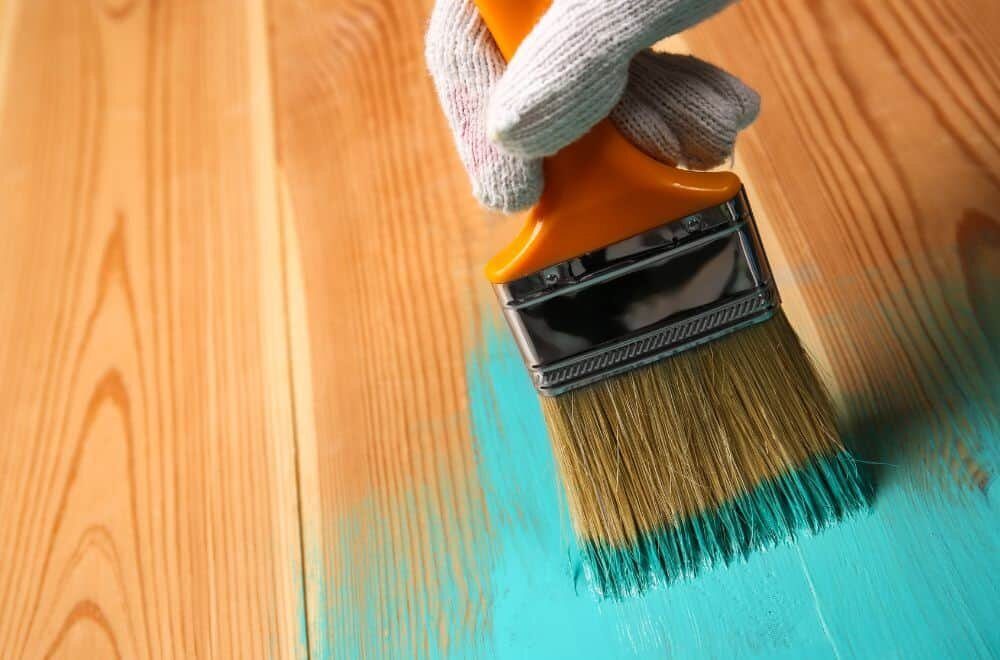
When it comes to preserving the look and feel of your wooden furniture, applying polyurethane on stained wood can be a game-changer. Here are some benefits of applying polyurethane on stained wood:
1. Protection from Scratches and Stains
Polyurethane is a durable and scratch-resistant coating that can help protect your wooden furniture from scratches and stains. By applying polyurethane on stained wood, you can ensure that your furniture stays looking new for longer.
2. Smooth and Shiny Finish
Polyurethane gives a smooth and shiny finish to the stained wood. It enhances the natural beauty of the wood and gives it a glossy look that can make it stand out in any room.
3. Longevity
Polyurethane can help extend the life of your wooden furniture. By providing a protective layer over the stained wood, polyurethane can help prevent damage caused by exposure to sunlight, moisture, and other environmental factors.
4. Easy Maintenance
Polyurethane makes maintenance of the stained wood easy. It prevents dust from settling on the surface of the wood and makes it easier to clean. You can simply wipe the surface of the wood with a damp cloth to keep it looking clean and shiny.
5. Versatility
Polyurethane can be used on a variety of wooden surfaces, from floors to furniture. It can be applied over different types of stains and finishes, making it a versatile coating for any wooden surface.
Overall, applying polyurethane on stained wood can be a great way to protect and enhance the natural beauty of your wooden furniture.
Potential Drawbacks of Applying Polyurethane on Stained Wood
If you are planning to apply polyurethane on stained wood, there are a few potential drawbacks that you should consider:
1. Polyurethane can alter the color of the stain
Polyurethane can have a slight yellowing effect on the wood, which can alter the color of the stain. This is especially true for oil-based polyurethane. If you want to maintain the color of the stain, it’s important to choose a water-based polyurethane that won’t yellow over time.
2. Polyurethane can create a plastic-like appearance
Polyurethane can create a plastic-like appearance on the wood, which can detract from the natural beauty of the grain. This is especially true for high-gloss polyurethane. If you want to maintain a natural look, it’s important to choose a satin or matte finish.
3. Polyurethane can be difficult to apply
Polyurethane can be difficult to apply, especially if you are not experienced with the process. It can be prone to drips, bubbles, and uneven coverage. It’s important to follow the manufacturer’s instructions carefully and to apply the polyurethane in thin, even coats.
4. Polyurethane can be difficult to remove
Polyurethane can be difficult to remove once it has been applied. If you make a mistake during the application process, it can be challenging to fix without sanding down the entire surface and starting over. It’s important to take your time and work carefully to avoid any mistakes.
Overall, there are some potential drawbacks to applying polyurethane on stained wood. However, if you choose the right type of polyurethane and apply it carefully, you can achieve a beautiful, durable finish that will protect your wood for years to come.
How to Apply Polyurethane on Stained Wood
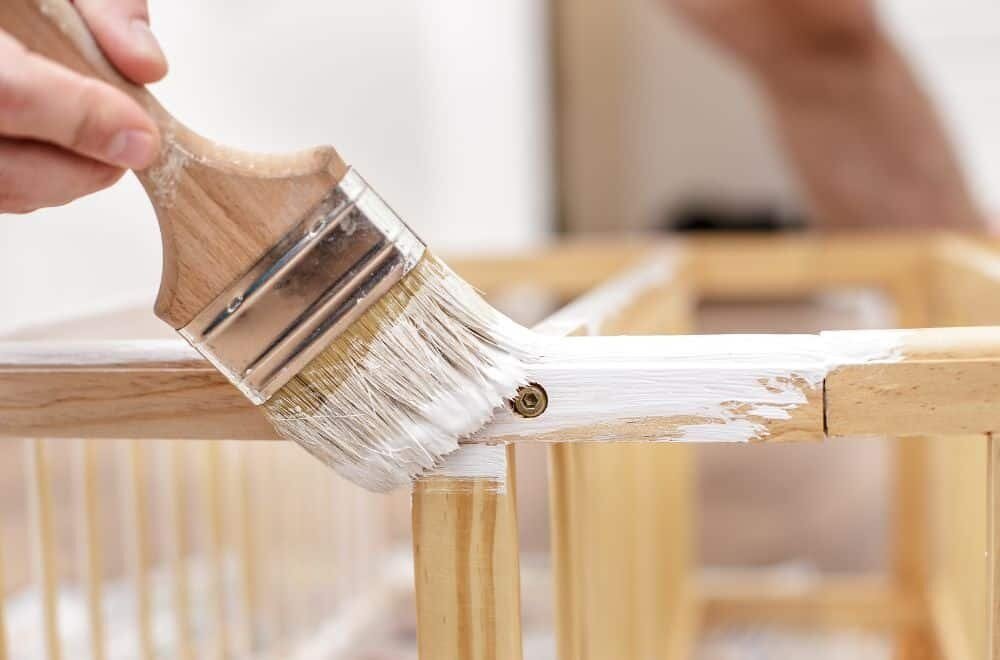
If you have recently stained your wood and are wondering whether to apply polyurethane on top of it or not, the answer is yes. Polyurethane is a protective coating that helps to prevent scratches and water damage while also enhancing the wood’s natural beauty. Here are the steps to follow when applying polyurethane on stained wood.
Preparation
Before you start applying polyurethane, make sure your wood is clean and free of any dust or debris. You can use a tack cloth or a vacuum cleaner to remove any dirt or sawdust. If you notice any imperfections on the wood surface, sand it down gently with a fine-grit sandpaper.
Next, choose the type of polyurethane you want to use. There are two types of polyurethane: water-based and oil-based. Water-based polyurethane is easy to clean up and dries faster, while oil-based polyurethane is more durable and gives a richer finish. Make sure to read the label carefully and follow the manufacturer’s instructions.
Application
When applying polyurethane, use a high-quality brush or a foam applicator. Start by applying a thin coat of polyurethane in the direction of the wood grain. Make sure to spread the polyurethane evenly and avoid leaving any brush marks or bubbles. If you notice any bubbles, gently brush them out with a dry brush.
Wait for the first coat to dry completely before applying the second coat. Depending on the type of polyurethane you are using, this may take anywhere from 2 to 24 hours. Once the first coat is dry, lightly sand the surface with a fine-grit sandpaper to remove any imperfections. Then, apply a second coat of polyurethane in the same manner as the first coat.
Drying and Curing
After applying the final coat of polyurethane, wait for it to dry completely before using the wood surface. This can take anywhere from 24 to 72 hours, depending on the type of polyurethane and the humidity level in your area.
Once the polyurethane is dry, it will still need to cure for several days before it reaches its maximum hardness and durability. Avoid placing any objects on the wood surface or exposing it to water or heat until the polyurethane has fully cured.
In summary, applying polyurethane on stained wood is a simple process that requires a bit of patience and attention to detail. With the right tools and techniques, you can protect and enhance the natural beauty of your wood for years to come.
Maintenance of Polyurethane-Coated Wood
Once you have applied polyurethane to your stained wood, it is important to properly maintain it to ensure its longevity and beauty. Here are some tips to help you maintain your polyurethane-coated wood:
Regular Cleaning
Regular cleaning is essential to maintain the appearance and durability of your polyurethane-coated wood. You can use a soft cloth or a damp mop to clean the surface. Avoid using harsh chemicals or abrasive cleaners, as they can damage the polyurethane coating. Instead, use mild soap and water to clean the surface.
Avoid Scratches and Dents
Polyurethane-coated wood is durable, but it is not indestructible. Avoid dragging heavy objects across the surface, as this can cause scratches and dents. Use furniture pads or coasters to protect the surface from scratches and dents.
Avoid Extreme Temperatures
Polyurethane-coated wood can withstand moderate temperatures, but it is not designed to withstand extreme temperatures. Avoid placing hot objects directly on the surface, as this can cause the polyurethane coating to melt or warp. Similarly, avoid exposing the surface to extreme cold, as this can cause the polyurethane coating to crack.
Recoating
Over time, the polyurethane coating may start to wear away. When this happens, you can recoat the surface to restore its appearance and durability. Before recoating, clean the surface thoroughly and sand it lightly to remove any rough spots. Apply a thin coat of polyurethane and allow it to dry completely before applying a second coat.
By following these tips, you can maintain the beauty and durability of your polyurethane-coated wood for years to come.
Alternatives to Polyurethane for Stained Wood
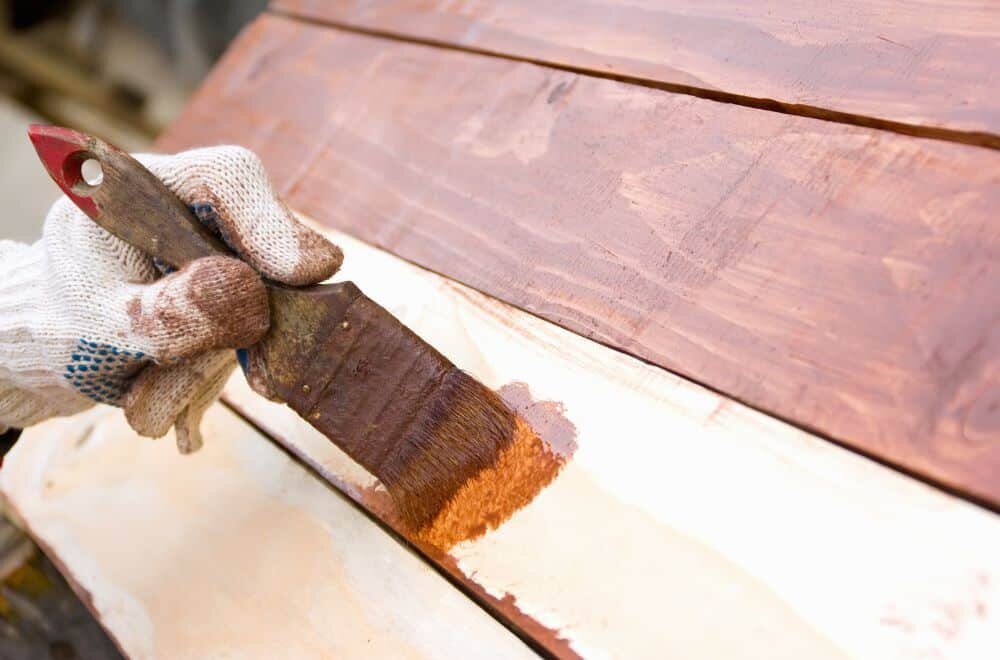
If you’re looking for alternatives to polyurethane for stained wood, you’re in luck! There are several options available that can provide a protective finish for your stained wood without using polyurethane.
Tung Oil
Tung oil is a natural oil that is derived from the seeds of the tung tree. It is a popular alternative to polyurethane because it is easy to apply and provides a durable finish that enhances the natural beauty of the wood. Tung oil is also resistant to water and stains, making it a great choice for high-traffic areas.
Shellac
Shellac is a natural resin that is derived from the secretions of the lac bug. It has been used for centuries as a wood finish and is still a popular choice today. Shellac is easy to apply and dries quickly, providing a hard, protective finish that resists water, alcohol, and heat.
Lacquer
Lacquer is a synthetic finish that is made from nitrocellulose and other chemicals. It is a popular alternative to polyurethane because it dries quickly and provides a hard, durable finish. Lacquer is also resistant to water and stains, making it a great choice for high-traffic areas.
Wax
Wax is a traditional finish that has been used for centuries to protect and enhance the natural beauty of wood. There are several types of wax available, including beeswax, carnauba wax, and candelilla wax. Wax is easy to apply and provides a low-luster finish that enhances the natural grain of the wood. However, wax is not as durable as other finishes and may require more frequent reapplication.
In conclusion, there are several alternatives to polyurethane for stained wood, each with its own unique benefits and drawbacks. Consider your specific needs and preferences when choosing a finish for your stained wood project.
Frequently Asked Questions
How do you apply polyurethane to wood that has been stained?
When applying polyurethane to stained wood, it is important to ensure that the surface is clean and free of dust. You can use a clean cloth or brush to apply the polyurethane in thin, even coats. Be sure to follow the manufacturer’s instructions for drying times and the number of coats recommended.
Is it necessary to apply polyurethane after staining wood?
While it is not absolutely necessary to apply polyurethane after staining wood, it is highly recommended. Polyurethane provides a protective layer that helps to prevent scratches and other damage to the stained surface. It also helps to enhance the color and grain of the wood.
Do you need to sand between staining and applying polyurethane?
Yes, it is recommended to sand between staining and applying polyurethane. This helps to ensure a smooth and even surface for the polyurethane to adhere to. Use a fine-grit sandpaper and be sure to remove all dust before applying the polyurethane.
How long should you wait after staining wood before applying polyurethane?
The recommended wait time before applying polyurethane after staining wood varies depending on the type of stain used. It is best to follow the manufacturer’s instructions for the specific stain you are using. In general, it is recommended to wait at least 24 hours before applying polyurethane.
Can you use water-based polyurethane on stained wood?
Yes, you can use water-based polyurethane on stained wood. However, it is important to ensure that the stain is completely dry before applying the water-based polyurethane. Water-based polyurethane dries faster than oil-based polyurethane, so be sure to work quickly and apply thin, even coats.
Do you need to seal wood after staining before applying polyurethane?
It is not necessary to seal wood after staining before applying polyurethane. However, if you are using a stain that is not compatible with polyurethane, you may need to apply a sealer before applying the polyurethane. Be sure to check the manufacturer’s instructions for compatibility and application guidelines.
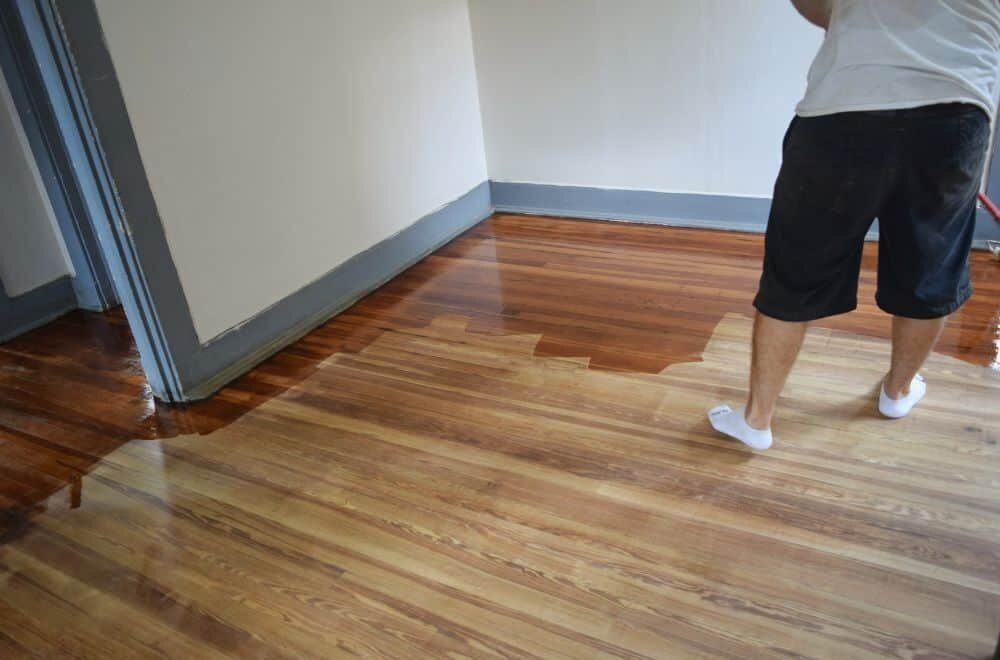
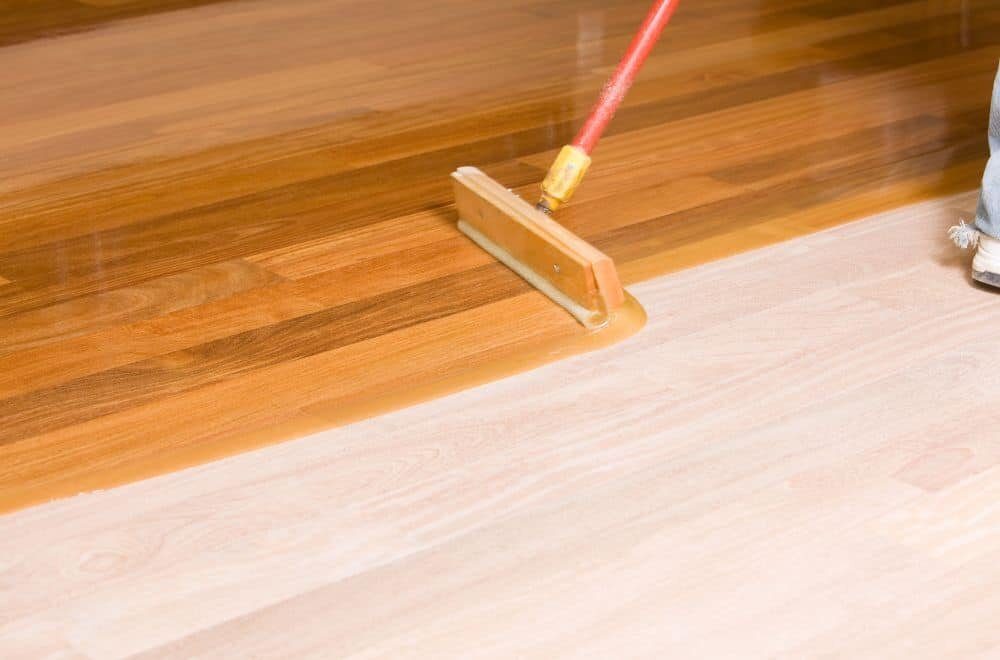
 Image Credit: thespruce
Image Credit: thespruce Image Credit: familyhandyman
Image Credit: familyhandyman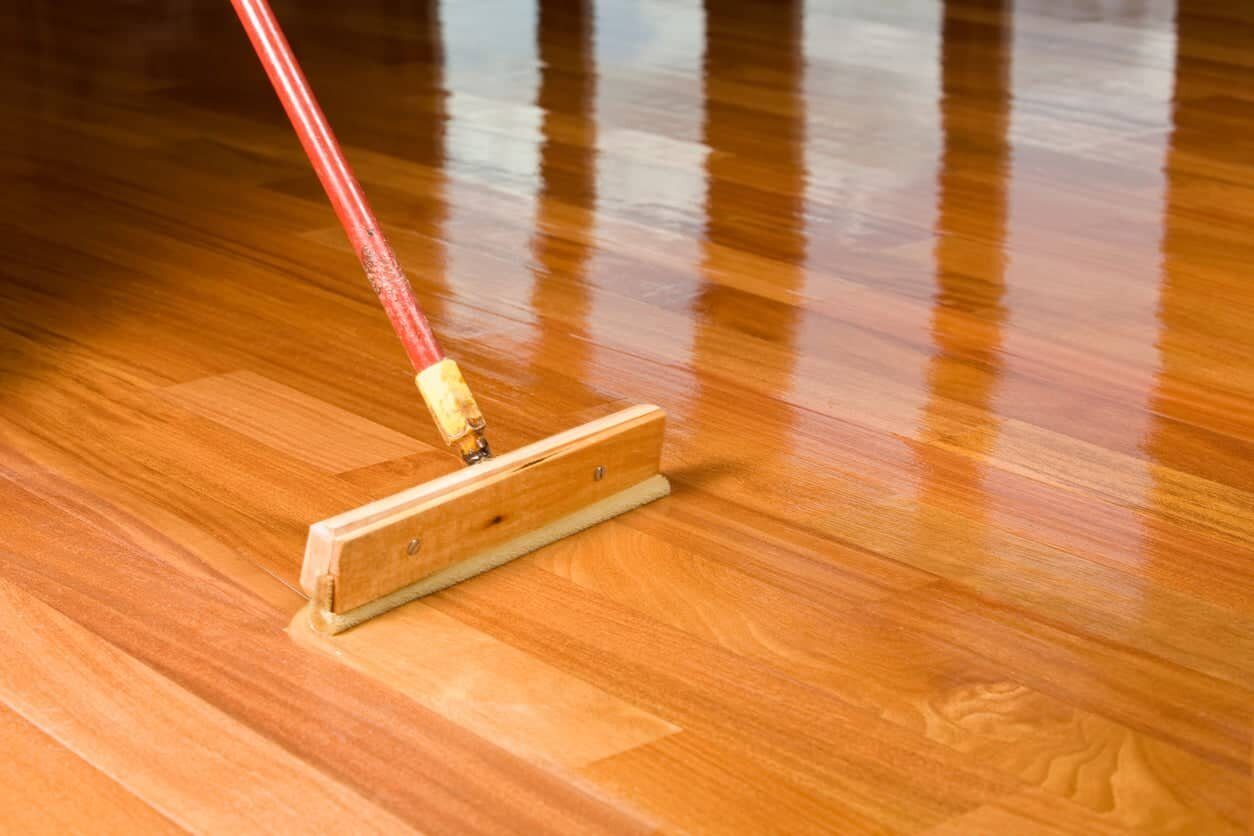 Image Credit: bobvila
Image Credit: bobvila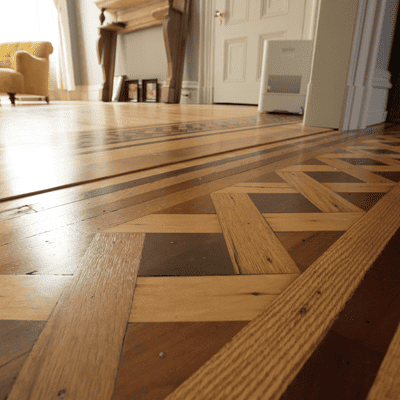 Image Credit: artisanwoodfloorsllc
Image Credit: artisanwoodfloorsllc Image Credit: gizmoplans
Image Credit: gizmoplans